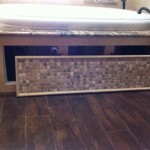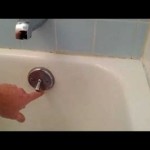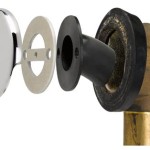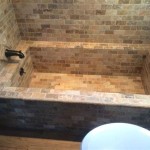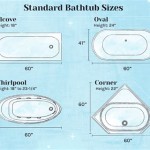Bathtub Bliss: Exploring the Essential Aspects of Mid Century Bathtubs
Step into a realm of timeless elegance with mid century bathtubs. These iconic fixtures embody the essence of retro charm and modern functionality, creating a blissful bathing experience. Uncover the defining characteristics that make mid century bathtubs a must-have for discerning homeowners.
Sculptural Silhouettes
Mid century bathtubs are renowned for their sculptural forms. They depart from the traditional rectangular designs, embracing curves, tapered edges, and geometric lines. These eye-catching silhouettes create a striking focal point in any bathroom, transforming it into a sanctuary of beauty.
Durable Construction
Mid century bathtubs are crafted from durable materials such as cast iron or acrylic. Cast iron tubs offer exceptional heat retention, providing a warm and cozy soak. Acrylic tubs, on the other hand, are lightweight, easy to clean, and resistant to scratching and fading.
Freestanding Design
Freestanding mid century bathtubs add a touch of opulence to any bathroom. Their absence of an apron allows for versatile placement, enabling you to create a stunning centerpiece. Whether positioned in the middle of the room or alongside a window, these bathtubs exude an air of grandeur.
Nostalgic Charm
Mid century bathtubs evoke a sense of nostalgia, transporting you back to a bygone era. Their signature color palette, inspired by the 1950s and 1960s, includes bold hues such as turquoise, pink, and yellow. This retro aesthetic brings a vibrant and cheerful touch to contemporary bathrooms.
Modern Functionality
Despite their vintage appeal, mid century bathtubs are equipped with modern features that enhance comfort and convenience. Many models incorporate ergonomic designs, featuring contoured backrests and lumbar support. Additionally, some bathtubs are equipped with built-in jets or air bubbles, providing a therapeutic bathing experience.
Conclusion
Mid century bathtubs are a timeless investment, combining retro charm with modern functionality. Their sculptural silhouettes, durable construction, freestanding design, nostalgic appeal, and modern features make them the perfect centerpiece for any bathroom. Whether you seek a touch of vintage elegance or a luxurious and comfortable bathing experience, a mid century bathtub is sure to fulfill your desires.

Mid Century Modern Bathroom Ideas Remodel Or Move Midcentury

Midcentury Modern Bathroom Ideas Forbes Home

Tiled In Tub Eclectic Bathroom Green Design

Mid Century Modern Bathrooms Design Ideas

Mid Century Modern Master Bathroom Dwellinggawker

Clawfoot Tub Meets Mid Century Modern Vanities Trinsic Filler And Vero Faucet Featured Design An Bathroom Inspiration

75 Chic Mid Century Modern Bathroom Decor Ideas Shelterness

75 Mid Century Modern Claw Foot Bathtub Ideas You Ll Love December 2024 Houzz

15 Amazing Mid Century Bathroom Design Ideas For A Retro Touch 333 Images Artfacade Modern

23 Midcentury Modern Bathroom Ideas Hunker

